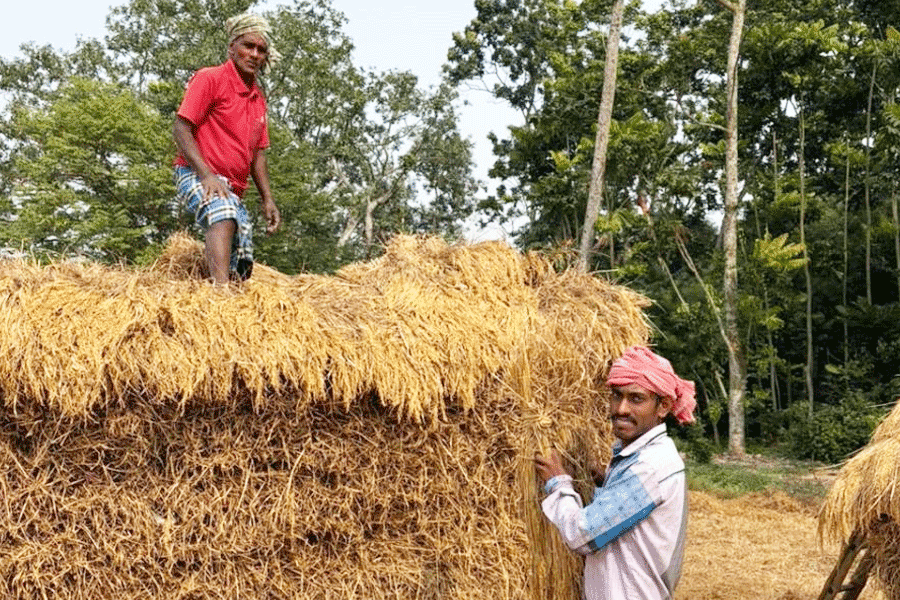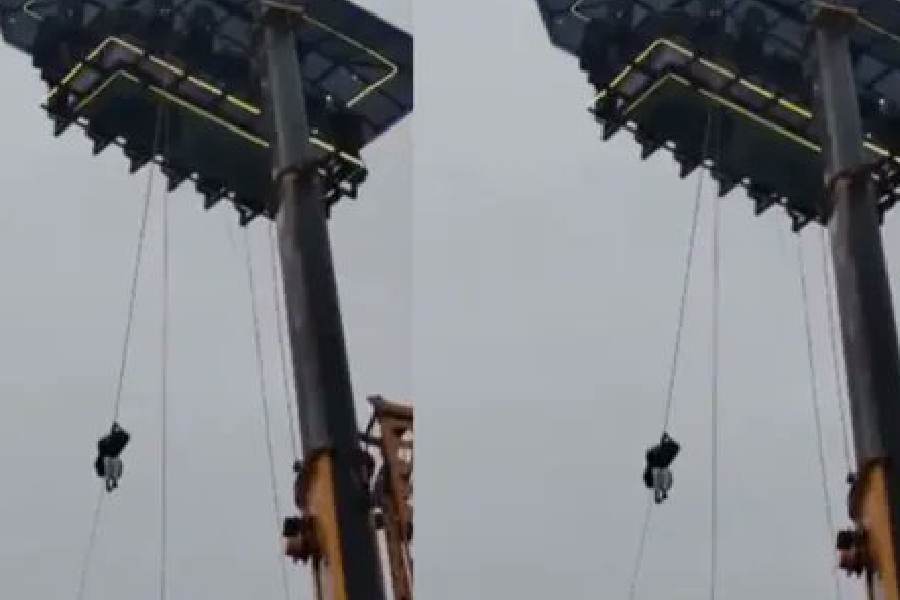 |
| Products made from ramie fibre. Telegraph picture |
Guwahati, Nov. 7: Ramie experts in the Northeast have called for putting more efforts to increase the cultivation of this fibre to stop imports from China.
Ramie (Boehmeria nivea) is one of the oldest vegetable fibres that is native to Southeast Asian countries, including China and Philippines.
In Northeast, especially in Assam, ramie is grown because of its congenial climatic condition. It is used to weave traditional dresses and fishing nets. Obtained from ramie plant, which can be harvested up to six times a year.
Interacting with ramie farmers at a training programme in Sorbhog of Barpeta district recently, scientist in-charge of ramie research station, Barpeta, A.K. Sharma, stressed the mechanisation of ramie cultivation, particularly the post-harvest technology, as the fibre can be successfully utilised for manufacturing fabrics and apparels.
The ramie research station is a sub-station of Central Research Institute for Jute and Allied Fibres in Barrackpore in Bengal. “We should make all efforts to increase ramie cultivation as we are importing huge quantities from China,” Sharma said.
Experts said the fibre of Indian ramie has 28 to 30 per cent gum (weight basis), which needed to be lowered for production of textile fabric and breeding/development of low gum varieties of ramie was a challenge before the researchers.
For apparel industries, the ramie fibre needs to very fine which, at present, is imported exclusively from China. Even coarser fibre is also imported from China, which is used for manufacturing diversified products.
The production of ramie in India is 12 metric tonnes of which 10 metric tonnes come from the Northeast and the area under cultivation is 100 hectares of which 90 is in the region.
The production of ramie in China was 1,24,000 metric tonnes in 2011.
He said under tribal sub-plan of Indian Council of Agricultural Research, at least 500 hectares have been planned for area expansion within the next two years in the Northeast.
Farmers of the border areas of Assam have expressed their interest in ramie cultivation. Farmers of Arunachal Pradesh have initiated ramie plantation in West Siang district under the tribal sub-plan of the ICAR.
The district agricultural officer, Barpeta, Assam, M.P. Rownier, said ramie is a more remunerative crop than other fibre crops but it can only be popularised among the small and marginal farmers of the country through public-private partnership, participatory approach by farmers and industry and institutions.
Some of the farmers raised several issues and problems associated with ramie cultivation and marketing during the lecture.
A training manual on ramie cultivation was published in the local language and distributed to the farmers.










